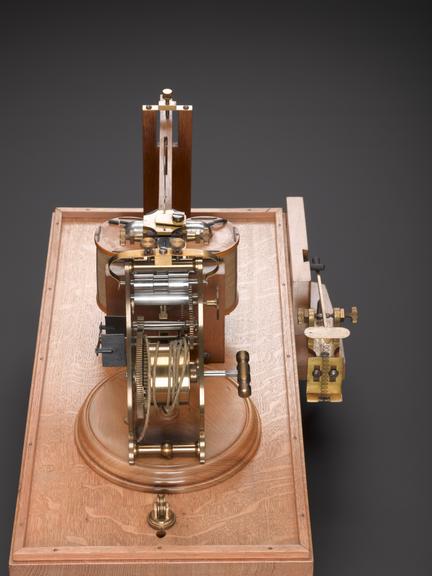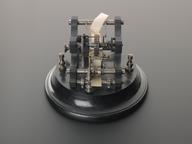

Replica of Morse's second model of telegraphy apparatus, 1934
- maker:
- Deutsches Museum








Replica of Morse's second model of telegraphy apparatus, probably made by the Deutsche Museum, Munich, Germany, 1934. Copy of an original on display in the Deutsche museum, dating from 1846.
This is a replica of Samuel Morse's second model of telegraphy apparatus from 1835. Morse was one of the pioneers of electric telegraphy. Prompted by receiving news of his wife's death too late to attend her funeral, Morse was determined to improve the speed of long distance communications (which at that point relied on horse messengers). Morse invented an instrument that used a current to displace an electro-magnet, which moved a marker, therefore recording the breaks in the current - the invention of Morse Code. At the same time, Cooke and Wheatstone were working on their own electric telegraph in England. Although Morse claimed to conceive the idea earlier, Cooke and Wheatstone were in 1837 the first in the world to patent an electric telegraph system. Morse maintained that he was the true inventor of the electric telegraph, as only his instruments were able to record messages as well as receive them. He asserted that Cooke and Wheatstone's instruments were merely electrical semaphores. The equipment's shows the influence of Theodore Vail, Morse's assistant. The dot and dash signals were embossed onto moving paper tape and a sending key was attached to the frame.
Details
- Category:
- Telecommunications
- Object Number:
- 1934-545
- Materials:
- wood (unidentified), brass (copper, zinc alloy), paint, rubber (unidentified) and steel (metal)
- type:
- telegraph
- credit:
- Purchased from the Deutsches Museum




